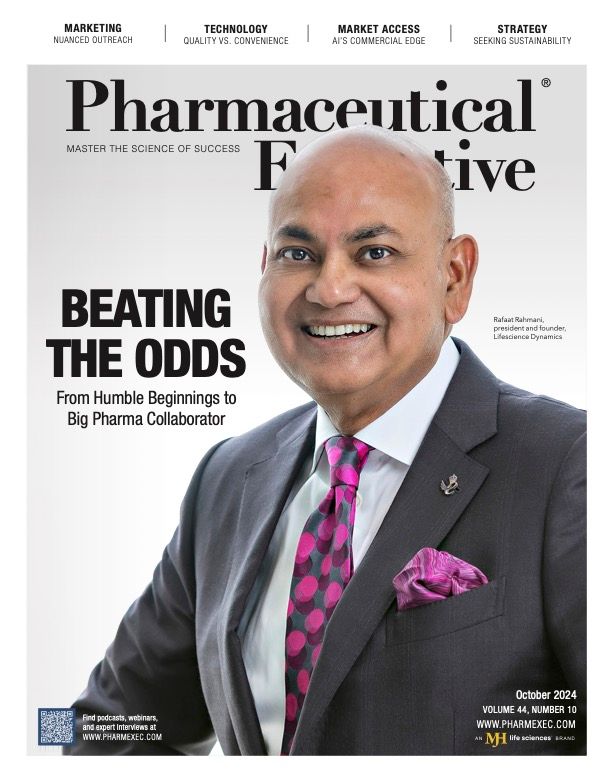Assembly Required: Building Blocks in Biopharma
Highlighting two pieces beyond Pharm Exec's October headliners that draw interesting parallels when it comes to life sciences leadership and building teams and capability internally—whether new businesses or new brands.

The October issue of Pharmaceutical Executive is packed with content. Not only do we feature our signature leadership-insight items—the executive profile and executive roundtable—in the same edition, we also present our annual guide revealing the finalists for Pharm Exec’s 2024 APEX Awards. This year marks the fourth year of these honors, which celebrate the work of healthcare advertisers (the winners will be announced on Nov. 13 at a dinner event in NYC and posted online shortly after). Those elements all stand on their own and I encourage you to peruse each. The honest and frank exchange among biopharma experts in our roundtable discussion, focusing on the hot-button issue of sustainability, is particularly enlightening.
But this month, among the rest of our coverage field, I wanted to highlight two pieces beyond the headliners that, while distinctly different from the other, draw interesting parallels when it comes to life sciences leadership and building teams and capability internally—whether new businesses or new brands. And, interestingly, the strategies cover two extremes: startups and Big Pharma.
Concerning the latter, guest author Dan Asch, VP of the oncology franchise at Boehringer Ingelheim, in our Back Page column, offers his formula for “rallying” teams around growing therapeutic- and research-focused businesses within a company. In this case, oncology. He cites three components that are key—and the need to scale quickly while maintaining a “shared purpose.”
“Building organizational readiness to bring new innovations to those living with cancer requires a very different approach than our work that supports much larger populations,” writes Asch. “Because of that, one of the first things we did was gather our cross-functional partners from across the organization in workshops and forums with experts in rare disease to understand how we need to pivot to serve this community.”
In the other piece, guest author Jessica Meng, of CareDx, spotlights a perhaps overlooked—or, at least, not well-chronicled—aspect of the startup story for emerging biopharma companies: commercializing and marketing their novel product. Borrowing from the Big Pharma playbook is not an option. “They can’t afford the Ferrari, so they need a souped-up car that has been lovingly assembled from just the right found parts,” she writes.
For more context on both, and the parallels involved, please check out the full articles inside. As always, thanks for reading.
Mike Hennessy Jr. is President and CEO of MJH Life Sciences

Addressing Disparities in Psoriasis Trials: Takeda's Strategies for Inclusivity in Clinical Research
April 14th 2025LaShell Robinson, Head of Global Feasibility and Trial Equity at Takeda, speaks about the company's strategies to engage patients in underrepresented populations in its phase III psoriasis trials.
Beyond the Prescription: Pharma's Role in Digital Health Conversations
April 1st 2025Join us for an insightful conversation with Jennifer Harakal, Head of Regulatory Affairs at Canopy Life Sciences, as we unpack the evolving intersection of social media and healthcare decisions. Discover how pharmaceutical companies can navigate regulatory challenges while meaningfully engaging with consumers in digital spaces. Jennifer shares expert strategies for responsible marketing, working with influencers, and creating educational content that bridges the gap between patients and healthcare providers. A must-listen for pharma marketers looking to build trust and compliance in today's social media landscape.